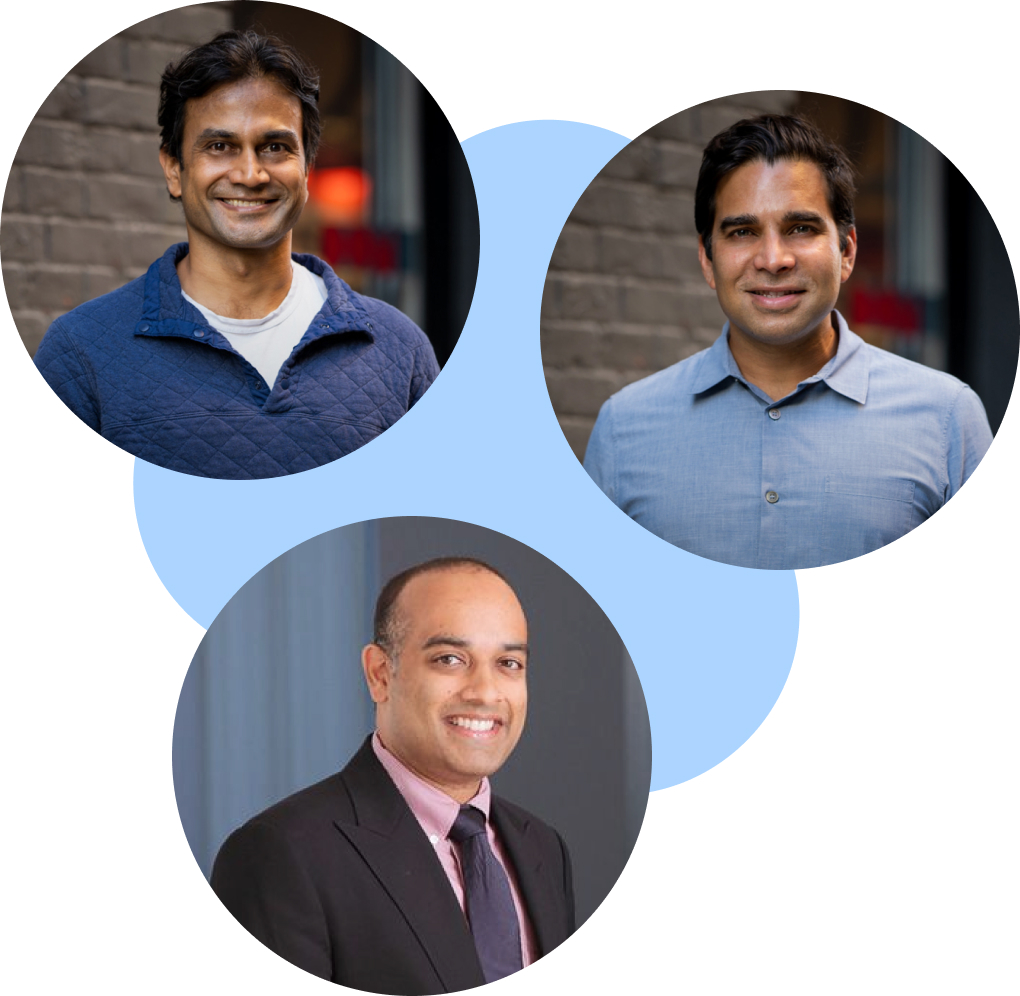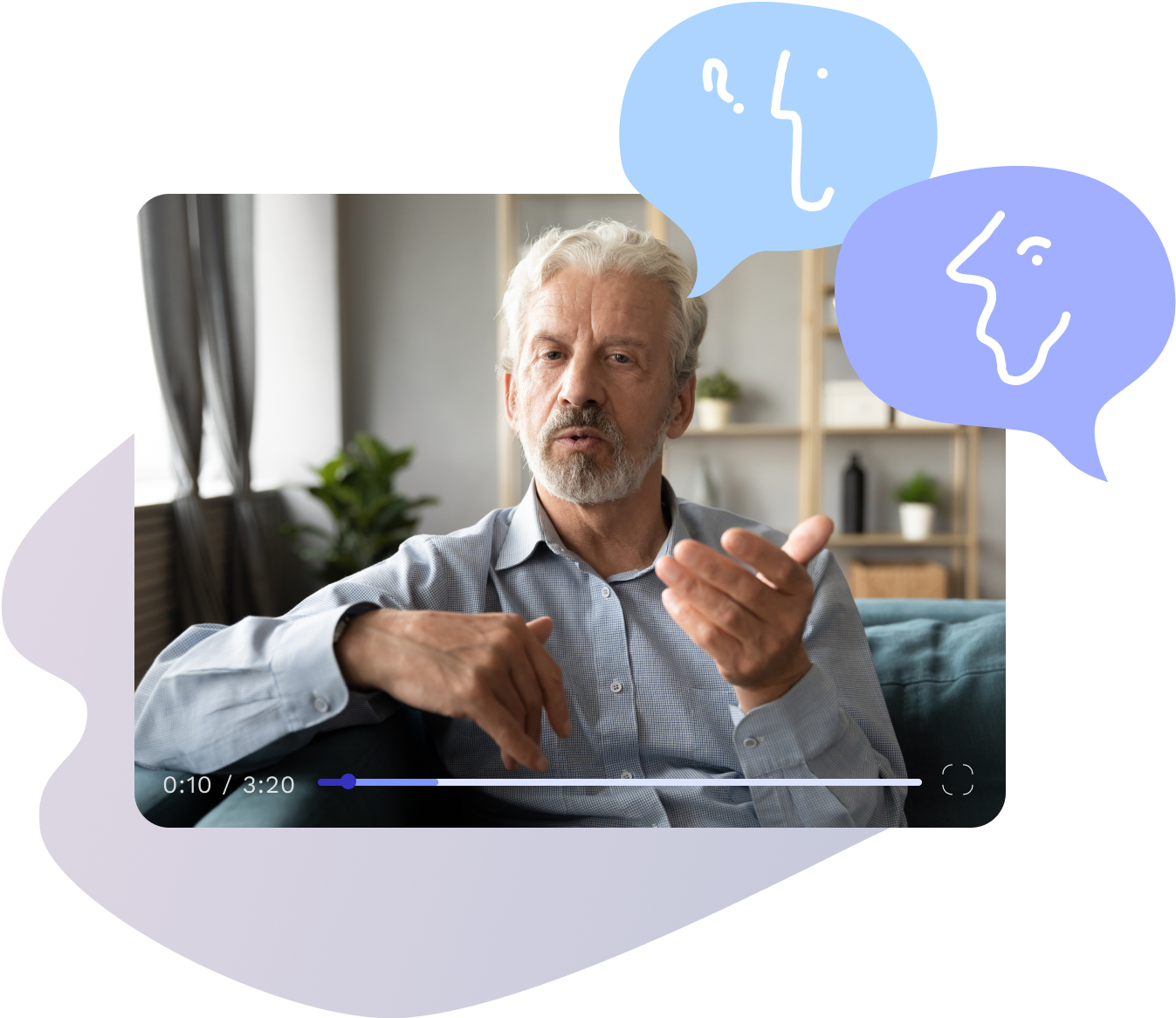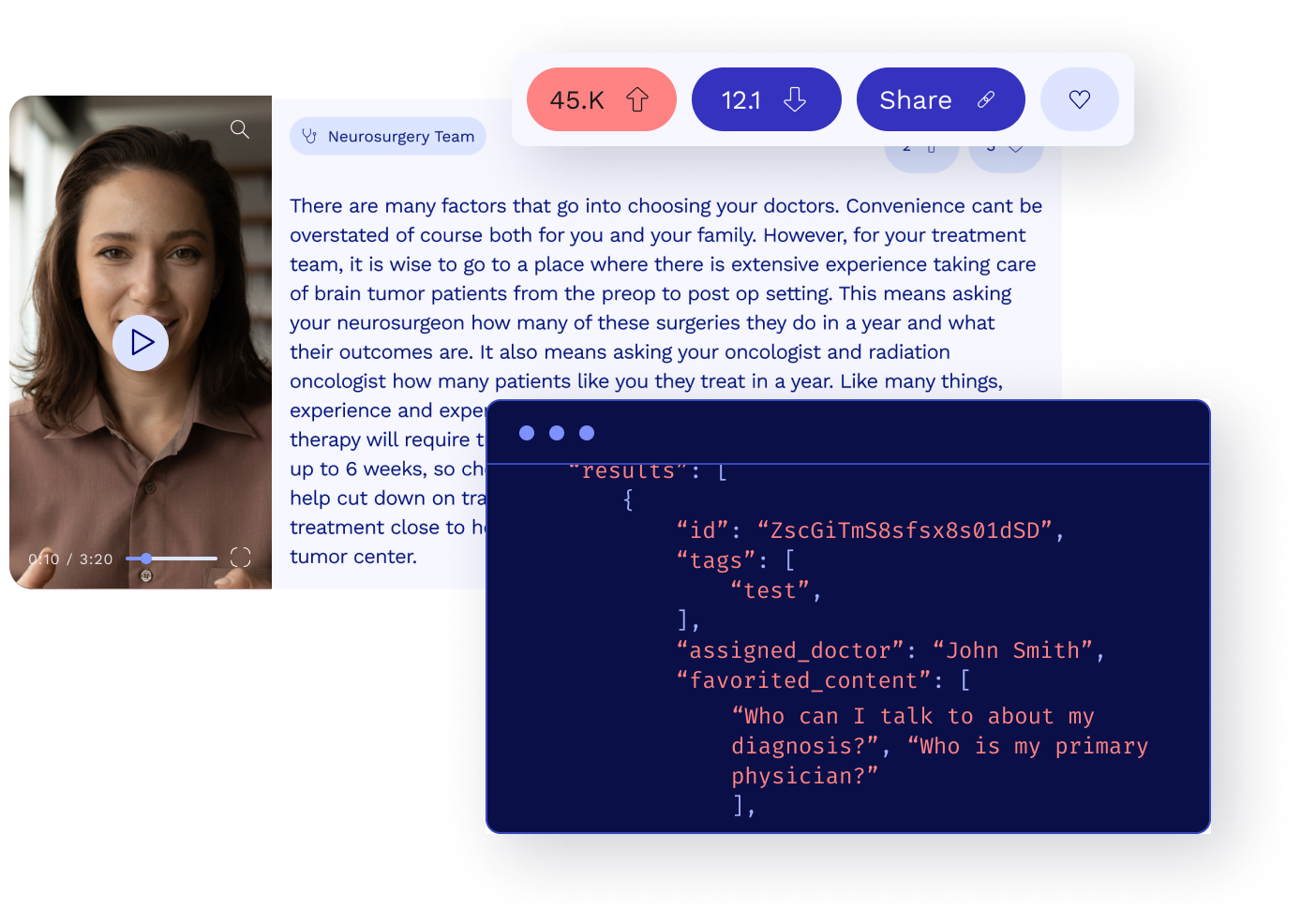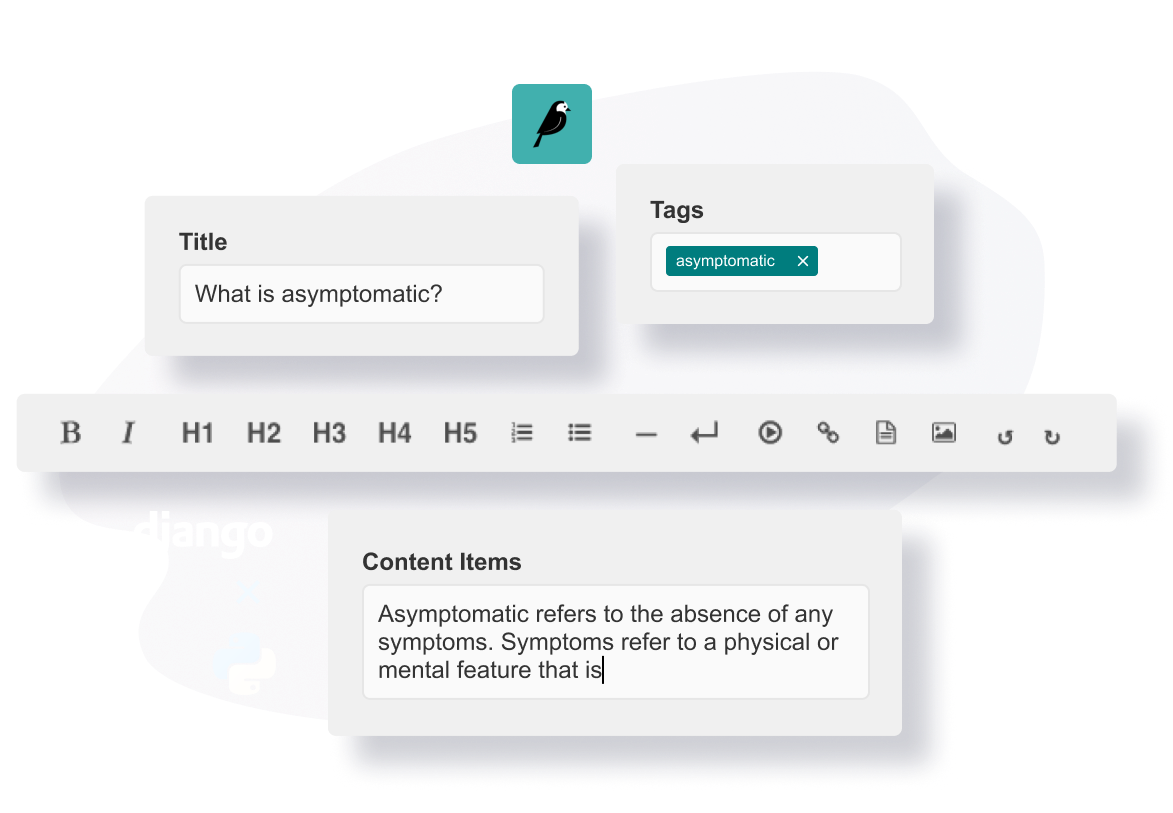Building a friendlier medical education platform
Roon enables patient and caregiver communities to access clinically-vetted guidance and advice, helping them confidently navigate terminal illness diagnoses.
Product Strategy
Software Development

About the client
Internet armchair experts have no place in healthcare
As caregivers and physicians themselves, Arun, Vikram, and Rohan are acutely aware of the angst of navigating health conditions online. Search results are plagued with rampant misinformation, SEO and ad-driven clickbait links, and a downright dangerous lack of accuracy. Google, WebMD, and your ignorant high school friends on Facebook won’t understand—and shouldn't advise on—what you are going through personally.
Focusing first on glioblastoma patients, Roon was founded to create an online space for people to find the community, information, and support they need when experiencing health challenges.


“There’s all this time, energy, and money being spent on making shopping easier. What if we could spend that same amount of energy and ingenuity in making the experience of health so much better?”
Co-Founder, Chief Medical Officer, & Neurosurgeon
Our goal
Blending community and care
Despite their bad rap, online communities and forums can be extremely helpful in shaping health outcomes. Roon is harnessing the power of human connection from social networks and infusing it with trustworthy medical information, sourced directly from vetted clinicians.
A vision this bold needed an ambitious platform to make it possible. Our team worked closely with Roon to determine the right architecture and infrastructure for the product, which we then developed.

Our approach
Building a cohesive technical strategy
Working as a joint team, we discussed approaches that would serve the project best, reviewing prior research, requirements, and company IP that Roon generated while brainstorming the hypothesis they wanted to test. It was clear their team thought deeply about the product interactions and growth strategies that would resonate best with the community.

An important area of debate was how the site would interact with search engines and handle organic vs. paid traffic. Understanding what sections we wanted indexed and discovered vs. what sections should be behind authentication was key to making technical decisions and structuring the layout of the product.
Architecture, infrastructure, and database design
Throughout the Product Strategy Sprint, we focused on defining requirements—suggesting programming languages and frameworks, discussing tradeoffs between microservice and monolithic design, and evaluating third party tools.
Developing Roon’s ideal data model required custom data types to balance a complex relationship between multiple user personas. We defined URL patterns, API endpoints, and permission rules to expose and control the access of this data.

Hosting and platform development
Like any responsible startup, Roon needed a service that made initial development easy but also scaled as complexity increased—without running up hosting costs. Based on their requirements, we selected Google’s Cloud Run product after evaluating vendors and serverless or fully-managed solutions.


It was especially important for Roon’s expert physicians to have a smooth admin experience for creating long form content. We exposed the content through a set of JSON API endpoints and moved content editing and management to the server directly using a hybrid Single Page App (SPA) approach.
After defining the core architecture and infrastructure, we built a custom CMS using a Python and Django based framework, Wagtail. We accounted for features such as sign up, authentication, and user cohorting—all with a hyperfocus on delivering an exceptional user experience.

With existing design assets, we then created a Next.js and React frontend to consume the content API and display the application. Several React tools were combined to build a single code base that worked for both web and mobile applications, and especially for search engines.




DevOps and SDLC improvements
Throughout the product build and deployments, our team automated Roon’s DevOps approach and created onboarding scripts for future engineers. We provided documentation for technical and product decisions, architecture and infrastructure, development environment setup, and which deployment processes to follow. We set up continuous integration and continuous deployment strategies (CI/CD), along with performance and error monitoring with Sentry. We also installed custom Google Analytics events to observe behavior on the platform and generate flash reporting on user metrics against which to measure the initial business thesis.

The result
A foundation that scales
Over a year-long period, our CTO and Engineering Managers helped build a healthy engineering culture and transition ownership to Roon’s internal team. We acted as a technical thought partner, onboarded new engineers, pair programmed, and reviewed pull requests to ensure code quality and branch hygiene.
Roon went on to launch their platform, raising seed investment from Sequoia, FirstMark, SV Angel, Maveron, TMV, and M13 to surround glioblastoma patients and their families with the support of a caring community. Next, they’ll turn their attention toward bringing similar improvements to other conditions.

“I particularly appreciated the back-and-forth technical exchanges with Ben Beecher, Lightmatter's CTO, as we built our platform. It was important to me to vet ideas carefully.”
Co-Founder & Chief Technology Officer






